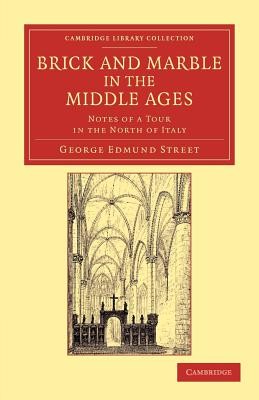
- We will send in 10–14 business days.
- Author: George Edmund Street
- Publisher: Cambridge University Press
- ISBN-10: 1108051928
- ISBN-13: 9781108051927
- Format: 14 x 21.6 x 2.1 cm, minkšti viršeliai
- Language: English
- SAVE -10% with code: EXTRA
Reviews
Description
An architect and architectural theorist, George Edmund Street (1824-81) was one of the key proponents of the 'High Victorian' Gothic style in nineteenth-century Britain. He is best known as the mind behind London's Royal Courts of Justice. Elected an associate of the Royal Academy in 1866, Street became its professor of architecture in 1880. In 1874 he received the gold medal of the Royal Institute of British Architects after John Ruskin declined it, and he served as the Institute's president in 1881. Street's Gothic architecture was influenced by continental examples: this book, first published in 1855, serves as an important source for interpreting his output. It is copiously illustrated, arranged as a travelogue of mostly pointed-arch architecture seen in Italy, and covers exterior and interior elevations, sculptural details, metalwork and furniture.
EXTRA 10 % discount with code: EXTRA
The promotion ends in 21d.20:50:32
The discount code is valid when purchasing from 10 €. Discounts do not stack.
- Author: George Edmund Street
- Publisher: Cambridge University Press
- ISBN-10: 1108051928
- ISBN-13: 9781108051927
- Format: 14 x 21.6 x 2.1 cm, minkšti viršeliai
- Language: English English
An architect and architectural theorist, George Edmund Street (1824-81) was one of the key proponents of the 'High Victorian' Gothic style in nineteenth-century Britain. He is best known as the mind behind London's Royal Courts of Justice. Elected an associate of the Royal Academy in 1866, Street became its professor of architecture in 1880. In 1874 he received the gold medal of the Royal Institute of British Architects after John Ruskin declined it, and he served as the Institute's president in 1881. Street's Gothic architecture was influenced by continental examples: this book, first published in 1855, serves as an important source for interpreting his output. It is copiously illustrated, arranged as a travelogue of mostly pointed-arch architecture seen in Italy, and covers exterior and interior elevations, sculptural details, metalwork and furniture.


Reviews